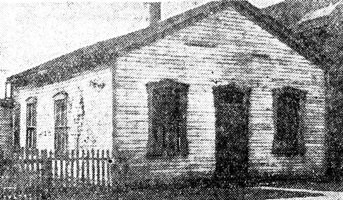African Methodist Episcopal Church
Introduction
Text-to-speech Audio
Images
Beth Emmanuel British Methodist Episcopal Church

Former African Methodist Church, 275 Thames Street

Backstory and Context
Text-to-speech Audio
Many of Upper Canada’s earliest Black settlers were members of the African Methodist Episcopal (AME) Church which formed an Upper Canada Conference in 1840. Soon a London Circuit of the AME was formed and in 1848 a church was built on Thames Street, the centre of early Black settlement in London.
At this time, there were about 300 Black residents in London supporting a total of three churches - two Methodist and one Baptist. This population continued to increase particularly after the passage in the United States of the Fugitive Slave Act in 1850. The Act was one reason that caused the Canadian AME churches to break away from their American parent in 1856 and form the British Methodist Episcopal (BME) Church.
In the early 1860s, London’s BME minister, Rev. Lewis Chambers, reported on the success he’d had in establishing a temperance society, encouraging Sabbath schools, and in the growth of the congregation. In fact, several years later they purchased a lot on Grey Street, in an area where many in the congregation now lived. Here, they built a new church, in 1868, naming it Beth Emanuel. The little wooden chapel was then sold and for many years was used as a house.
When the original church building on Thames Street was threatened with demolition in 2013, Beth Emanuel offered to provide it a new home next door. Hundreds of private citizens assisted by the City of London contributed to the relocation of the chapel.
Working with Beth Emanuel, the Fugitive Slave Chapel Preservation Project was formed, with the goal of restoring the chapel, building a small addition, and establishing a learning centre about slavery (both historic and contemporary), the Underground Railroad, and London’s Black history.
Sources
Pages 180-182 outlines the story of Henry Morehead and his difficult struggle to adapting to life as a poor Canadian. His owners previously did not allow Morehead's education to continue, for they believed it was not meant for 'his kind'.
London Advertiser, May 8, 1926
